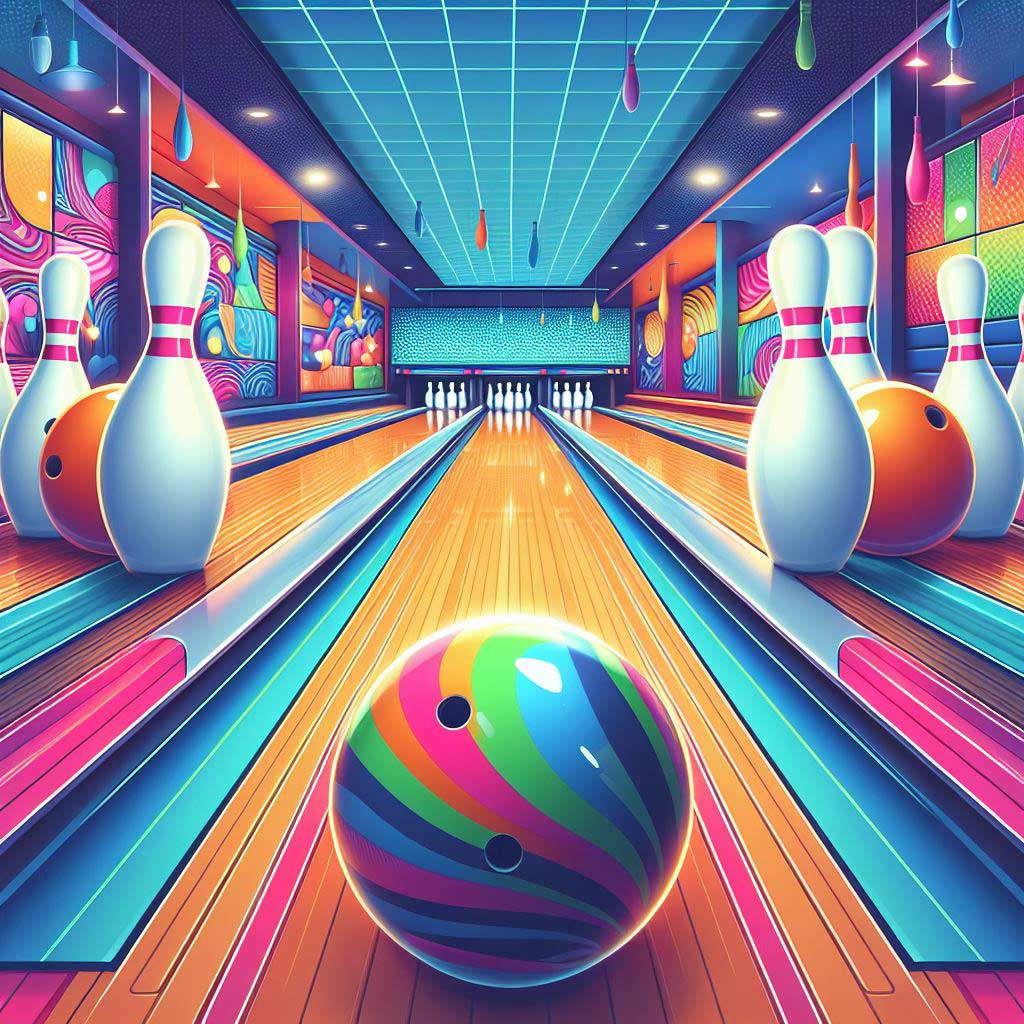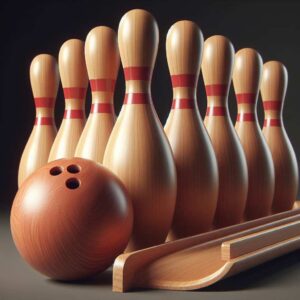If you dream of pins crashing down, the unique smell of alley wax, and the hustle and bustle of league night, you’ve considered trying your hand at the bowling business.
With nearly 1,400 bowling centers across America bringing in about $1 billion in yearly revenue, opening a bowling alley in the right location and running efficiently can mean striking it big as your own boss. But starting any new business requires careful planning and know-how if you want to roll a perfect game.
This comprehensive guide covers 7 key steps in planning, opening, and operating your own successful bowling center:
#1 Conduct In-Depth Bowling Alley Market Research
#2 Select a Viable Location for Your Bowling Venue
#3 Design the Ideal Layout for Lanes and Amenities
#4 Obtain Equipment and Set Up Bowling Infrastructure
#5 Hire Staff and Train for Day-to-Day Operations
#6 Implement League, Marketing, and Operations Plans
#7 Project Capital and Operating Costs Accurately
Follow this framework when asking the crucial question of “how to open a bowling alley” and avoid any gutters on your path to success.
Demand Analysis – A Growing Interest in Bowling
America’s fascination with knocking over pins has come a long way since the early 1900s. With almost 70 million people heading to the lanes every year, bowling remains a top participation sport.
The bowling boom slowed after the 1960s, but bowling alley owners continued catering to devoted bowlers. Today’s patrons also seek out glow bowling, electronic scoring, bumper lanes for kids, arcade games, full-service bars, and quality food.
When scouting potential locations (more details below), look closely at demographics including age distributions and families in the area. It takes understanding consumers’ needs and discretionary spending trends if you want every night to feel like league night.
Location Selection – Aim for High Traffic and Accessibility
Picking the right location sets the foundation for delivering on customer needs now and for years to come. Work with a commercial real estate agent to identify 3-5 properties that align with these bowling alley location tips:
- Nearby Daytime Population and Traffic Sources Consider proximity to malls, entertainment complexes, colleges, parks, and other anchors drawing in continual customers.
- Strong Nighttime Demand Sources Restaurants, bars, movie theaters, and concert venues that drive evening and weekend traffic are ideal bowling alley neighbors.
- Central Location and Accessibility Pick an easy-to-access location off a main highway, road, or traffic artery and offer ample parking spaces.
- Suitable Zoning Classification
Confirm commercial zoning allows for a sporting and amusement venue of your intended size. - Visibility Look for a property visible from nearby roads or the parking lot entrance area to highlight your brand.
Then assess attributes like usable space, facility age, electric output, and load capacity needs for bowling lanes and equipment during location comparisons.
Designing Your Bowling Center for Form and Function
The layout directly enables the bowling experience, so optimize square footage through smart bowling alley design. Work with an architect on must-have basics:
- Lanes – Most centers install 12-40 lanes at 12 to 15 feet wide each, including additional seating/scoring areas.
- Seating – Arrange tables and booths to accommodate guests with views of the lanes.
- Counter Service Area – Plan space for food and beverage preparation and service.
- Arcade – Incorporate room for coin-operated entertainment and redemption games.
- Pro Shop – Consider allocating space for ball drilling and fittings.
Factor in other priorities like bathrooms, storage spaces, and additional party/event hosting sections. adapted to handicap accessibility regulations. The design should allow able bowler traffic flow while accommodating equipment installation and ease of maintenance.
Specialized Equipment Needs for Outfitting Your Alley
The magic happens thanks to advanced equipment beyond just lanes and pins. Building up bowling infrastructure includes:
- Pinspotters – Contracting an experienced mechanic to install and maintain auto-scoring systems keeps the games moving along. Choose Brunswick or QubicaAMF pinsetters new or refurbished.
- Ball Returns – These capsule-based systems cycle balls back to players. Opt for above-lane guts or underground ball lifts.
- Foul Lights – Foul light sensors along the lane indicate if a bowler crosses the line.
- Masking Units – Mounted overhead units contain flashing lights, scoring monitors, and screens.
- Rental Inventory – Stock close-toed shoes in a range of sizes along with 10-16 lb. house balls for open play.
With all equipment installed to United States Bowling Congress standards, you’re ready for inspection permitting sign-off to open doors to excited bowlers!
Staff Up with the Right Bowling Alley Employees
From desk agents to league coordinators, pin chase assistants to bartenders, operating a bowling venue requires an experienced staff. Estimate hiring needs and costs for:
- Managerial Staff – General Manager, Assistant Manager, Shift Supervisors
- Customer Service – Desk/Reception Agents, Servers, Cooks
- Bowling Technicians – Mechanics to maintain lanes/equipment
- Additional Labor – Janitorial, security, instructors
Cover day-to-day bowling alley operations, specialized equipment, and emergency protocols during thorough employee onboarding and training. Above all, friendly service is what distinguishes a truly great bowling experience for patrons.
Implement Profit-Driving Programs and Promotions
Leagues represent the bowling industry’s bread and butter, so recruiting teams with customized shirts keeps players engaged as regular paying customers filling otherwise empty hours.
Tournament events also draw new faces with opportunities to win prizes or cash. Special promotions like college night, ladies’ night, unlimited bowling, or hourly specials help manage cash flow without heavy discounting.
Local sponsorships, partnerships, and an online/social media presence expand promotional reach. Consistently amazing service through staff and well-maintained facilities turns first-timers into lifelong loyal bowlers.
Bowling Alley Costs and Profit Potential
Major costs involved in getting a bowling alley business rolling include:
- Property Purchase/Lease
- Equipment – $100k-$200k
- Furnishings – $150k
- Licenses & Permits – $3k-$10k
- Insurance Policies
- Build Out/Construction – $800k average
- Initial Inventory, Staffing – $100k
Cover large fixed asset and operating costs through a small business administration loan or by bringing in private investors to the ownership team.
In terms of earnings potential, bowling alley profitability shifts seasonally with January-May bringing peak revenues. Based on location and capacity size, a well-run center can produce $20,000-$30,000 in profits monthly.
Hosting birthday parties and corporate events during off-peak times allows owners to strike up sustainable earnings year-round.
Roll Forward with Your Own Bowling Alley
The satisfying crash of bowling pins is now within your reach. By carefully researching location viability, designing a quality customer experience, installing specialized equipment properly, hiring and training sufficient staff, executing smart promotional programs, and understanding startup financials, your bowling alley stands set up for success.
Bring your bowling business dreams another step closer to reality by connecting with a bowling industry advisor to answer any outstanding questions. With the right mix of customer service skills and strategic business acumen, it’s go time to put “open for bowling” signs up for good!
Strike Up Your Own Bowling Success
Opening a thriving bowling entertainment center takes careful planning, substantial investments, and strong operational execution. But with enough passion for the sport and smart business decisions, your dream of owning a go-to community bowling alley can become a reality.
By following the steps outlined in this guide around market research, location analysis, layout and design, quality equipment choices, staff training, profit-driving programs, and customer service culture – combined with securing proper funding – you’re on the path to rolling out a uniquely rewarding business.
Owning a bowling alley means welcoming excited kids, families, and avid bowlers alike. It means fostering lasting community ties through leagues, events, and reliable service. Your center’s unique atmosphere is sure to strike up smiles, celebrations, and even some friendly competition.
Of course, consult licensed contractors, legal advisors, and bowling industry experts to address specialized considerations before launching your new venture.
With the right mix of entrepreneurial passion, operational savvy, and commitment to creating memorable guest experiences, there’s truly no limit to inspiring generations of happy bowlers in the years ahead.
The pins are set – now live your dream! Strike up that very first frame on opening night knowing your hard work built exactly the community gathering place you always envisioned. By focusing on the foundations covered today, you’re soon celebrating like you just bowled three strikes in a row. Let the good times and satisfaction roll!
Frequently Asked Questions
Is owning a bowling alley profitable?
Yes, owning a bowling alley can be a profitable business, especially if you run efficient operations and programming that keeps league bowlers and open play customers coming in consistently. Well-run bowling alleys with strong locations can make $20,000 to $30,000 or more in monthly profits.
How much space do you need to build a bowling alley?
For a typical 12 lane bowling alley, you need a commercial space of at least 12,000 to 15,000 square feet. This factors in adequate room for seating areas, food service counters, concourse spacing, and back-of-house space needs.
Can you make bowling alley at home?
Constructing regulation-sized lanes for a home is extremely difficult and expensive. But some high budget residential projects have included one or two shorter lanes more for leisure rather than competitive bowling.
How much does it cost to build a bowling alley in India?
Building a mid-sized bowling alley in India generally costs between 1 to 2 crore rupees, which equates to roughly $120,000 to $240,000 USD. Costs rise depending on imported equipment, facility size and overall luxury finishes.
How do you make a bowling alley successful?
Success factors include prime location visibility and accessibility, diverse programming like leagues and events, quality food/beverage service, excellent customer service culture, buying durable pinsetters and lanes, creative promotions, embracing modern amenities, keeping facilities spotlessly clean.
How much money does the bowling industry make a year?
According to research data, the bowling centers industry generates approximately $4 billion in direct revenue annually in the United States. Related consumer spending on food, entertainment, events etc. contributes more overall economic activity.
What kind of wood are bowling lanes made of?
Bowling lanes have a layered construction, with the visible lane surface made using various hardwoods, especially maple wood. Underneath lies a support base of pine along with stabilizing materials for durability through years of bowling ball impacts.
Why do they put oil on bowling lanes?
Bowling alleys use lane oil patterns to protect the wood finish from damage after repeated ball rolls. But oil placing is also a technical way to adjust ball hook potential and add challenge to strikes and spares. The oil forces bowlers to adjust lines and angles strategically.
How much space do I need for 2 bowling lanes?
For a 2-lane private bowling setup, you would ideally need floor dimensions of at least 25-30 feet wide by 60 feet deep, equivalent to 1,500 – 1,800 square feet of open floor space. This allows room for seating and adequate bowler approach, backswing and follow-through motion.





